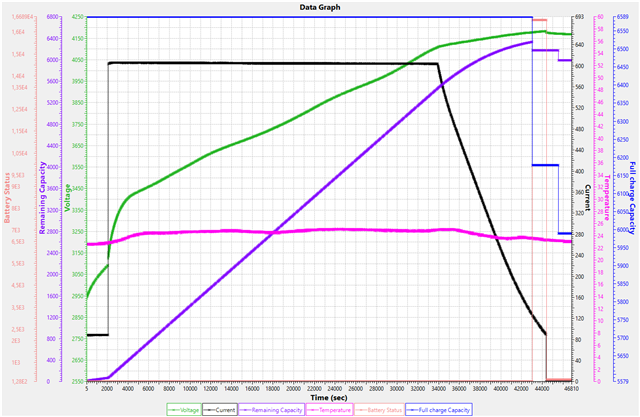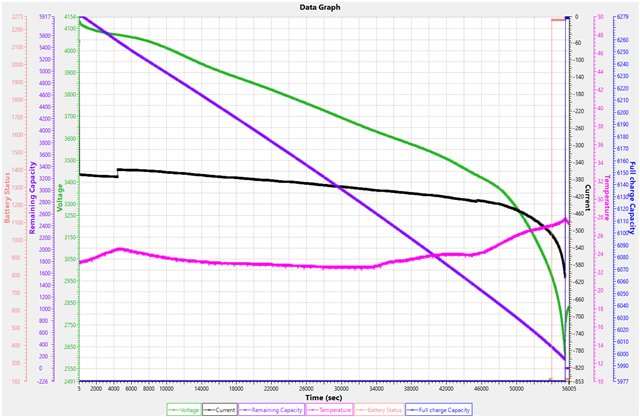Hi,
I have charged and discharged few times and I saw some strange behaviors and hope you can help:
Charging from zero to full:

* you can see that the charger is charging for >6200mAh
* when EoC is been detected and FCC is dropping and also the Remaining capacity
* the charger stops (I know it's a bit late here but it's nicer to see) and after a short rest time QMax is been updated. FCC and RemCap is dropping again.
* FCC and RemCap is now below 6000, but it was charged for over 6200mA!
Discharging from full to zero:

* the FCC is directly after discharge going up
* after a rest of 5h the FCC increased even further
* no R value update was done only QMax
Even after few charge and discharges the FCC and RemCap is still jumping. I thing the jump down after charge comes from the option CSYNC that is in default on and the jump up at end of discharge comes from a wrong R value? By looking in the register at the moment when it's full charged and before QMax is updated:

* DOD0 Passed Q is still -6262mAh (I would expected after CSYNC that should be the value for FCC and RemCap)
* but FCC and RemCap is 5892
* even True Full Chg Q is 5892
After Qmax update at fully charged the register looks like this:

So the question are now:
* Why is it jumping? I would expect a more stable value.
* Could be CSYNC be the problem? Here i expect that DOD0 Passed Q should be the same as FCC and RemCap after charging. Why is it not the case?
* Is the problem that there is no R value update related?
Regards,
Daniel



